The winning vision for Manchester's newest statue is announced
Fletcher Moss is well known to most residents of Didsbury. Avenues of trees lead to gardens layered with foliage. A haven for wildlife in an otherwise busy suburb, the park is part botanical garden and part wildlife habitat. Birds, from the song thrush to the blackbird to the carrion crow, are attracted the lush peace. Manchester’s piratical troupe of wild parakeets sometimes settles here, looking for dead trees to nest in.
We intend to put Emily Williamson's name back on the map... for budding environmental activists, eco-feminists and young people in search of inspiring role models
The park is named after local alderman Fletcher Moss, who donated the property to the city of Manchester in 1915. There are recreational facilities, tennis courts and so on, plus a cafe selling tea and cakes to the walkers who fancy resting their legs. Families come to play in the walled rock garden. But what the tennis players and the walkers and the families might not know is that this place was once home to Emily Williamson, respectable Victorian lady and fierce “eco-feminist”. She is the founder of what is now one of the world’s largest nature societies, the RSPB.
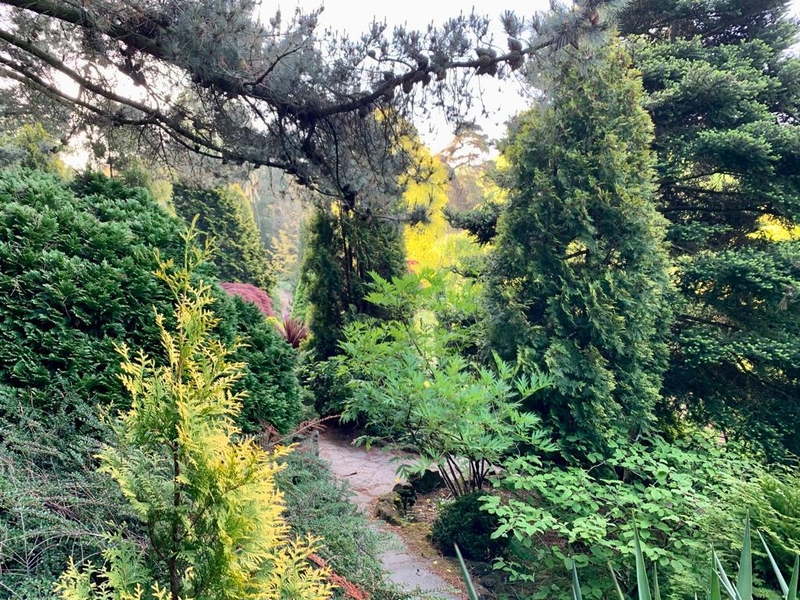
Now this beautiful park will be home to a statue of this fascinating and formidable woman as sculptor Eve Shepherd was chosen to produce one of Manchester's newest pieces of public art. Her innovative design - featuring vignettes of birdlife emerging from the crinoline of Emily's Victorian gown - will be unveiled on 17 April 2023.

Who was Emily?
Emily Williamson was born in Lancaster but moved to Manchester aged 27 when she married solicitor Robert Wood Williamson (son of a professor of natural history at what would become the University of Manchester). At the start of their married life, Robert and Emily embarked on a project to create a large rockery and garden stuffed with alpine plants at The Croft, their home in Didsbury. The house became what is now the Alpine Tea Rooms.
Emily’s fire for conservation was stoked as her favourite species, the Great Crested Grebe, being hunted to extinction for the plumage trade. And that trade was ferocious. Five million birds were killed every year to furnish the fashionable with hat decorations. The trimmings were so desirable that an ounce of egret feathers was worth twice as much as an ounce of gold. Horrified, Emily begged the British Ornithologists’ Union to take a stand against "murderous millinery". They ignored her letters.
Instead, she did what all refined ladies of the time did and got out her best china. Over afternoon tea at The Croft, she enlisted other women to take a pledge not to wear feathers. And so the Society for the Protection of Birds (later to gain royal assent and become the RSPB) was born.
It took 30 years for Emily’s campaign to bear real fruit – in 1921 the Plumage Act was passed, ending the trade in exotic bird skins. Vulnerable species began to recover but at least 61 species had been pushed to the brink of extinction.
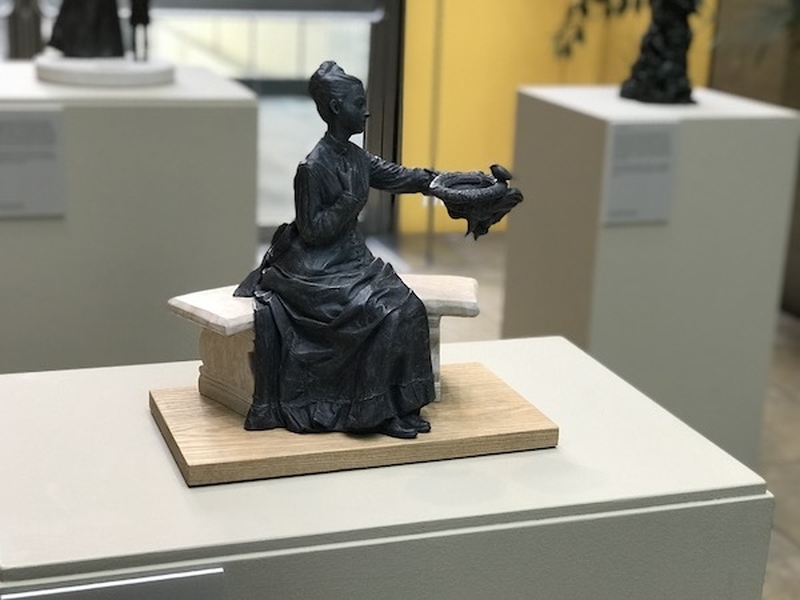
Emily Williamson, 'ecofeminist'?
For years the work of Emily Williamson lay long forgotten, a footnote to the RSPB story. Then, in 2018 the Friends of Fletcher Moss crowdfunded a plaque to remember Emily. It was at the unveiling that journalist and historian Tessa Boase met Manchester City councillor Andrew Simcock, who had previously chaired the campaign for the statue of Emmeline Pankhurst in Manchester city centre. Together they decided to further the work of the Friends and campaign for a statue of Emily.
As the statue of Pankhurst is already one of the most popular statues in Manchester, the campaign is surely hoping that another female pioneer will capture the hearts of Mancunians. Indeed, the campaigners say: “We intend to put Emily Williamson's name back on the map, by making her garden a place of pilgrimage not only for RSPB members but for budding environmental activists, eco-feminists and young people in search of inspiring role models.”
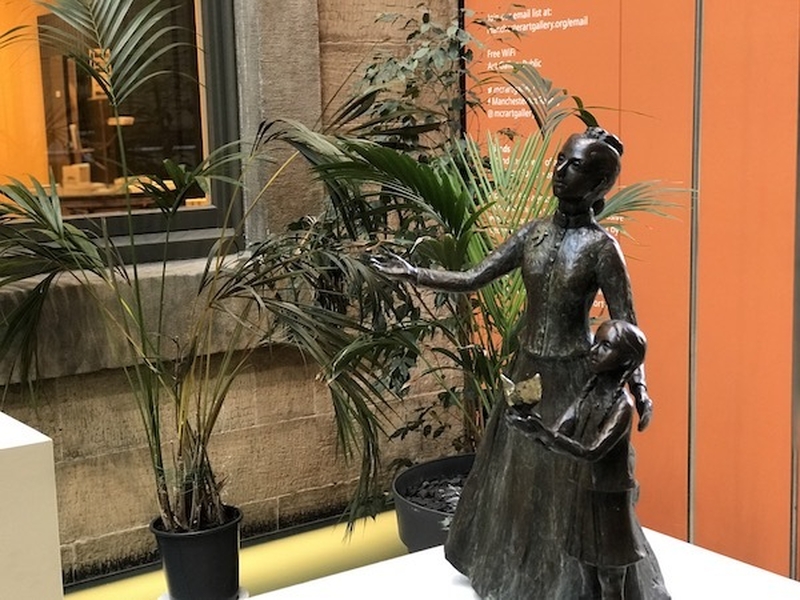
Consumer power
Despite the links between the two women, the awkward truth is that Emily’s cause – to end the use of threatened species’ feathers as fashion accessories – meant she was occasionally rubbed the wrong way by the suffragettes. Feathers, and especially feathers in hats, were part of the suffragettes’ “brand” - indeed, images of Emmeline Pankhurst often show her wearing a hat trimmed with an ostentatious plume.
However, even if Emily Williamson did not identify with the suffragettes, many of her tactics will resonate with today’s feminist activists. She joined forces with other women when the all-male British Ornithologists Union rejected her, teaming up with the formidable Etta Lemon and Eliza Philips of the Fur, Fin and Feather Folk in Croydon. Finding common cause with other ladies, in the end, served Mrs Williamson better than being subsumed into the male orthodoxy (in a nice coda the BOU made her a posthumous member earlier this year).
The group then launched a campaign that, with a few tweaks to take into account technological advances, would be just as successful in today’s world. Over 50,000 leaflets and 16,000 letters were sent out in 1898 alone, while, in a move that predates PETA by roughly a century, posters were put up in every train station showing images of the birds killed for fashion.
Awareness of the power of the consumer drove the campaign, and hard-hitting pamphlets shamed shoppers and shopkeepers for their part in enabling the trade in rare feathers. While women may have been all but excluded from public finances, in many cases they held power in the domestic purse and it was women’s spending that in the end decided the fate of this trade.
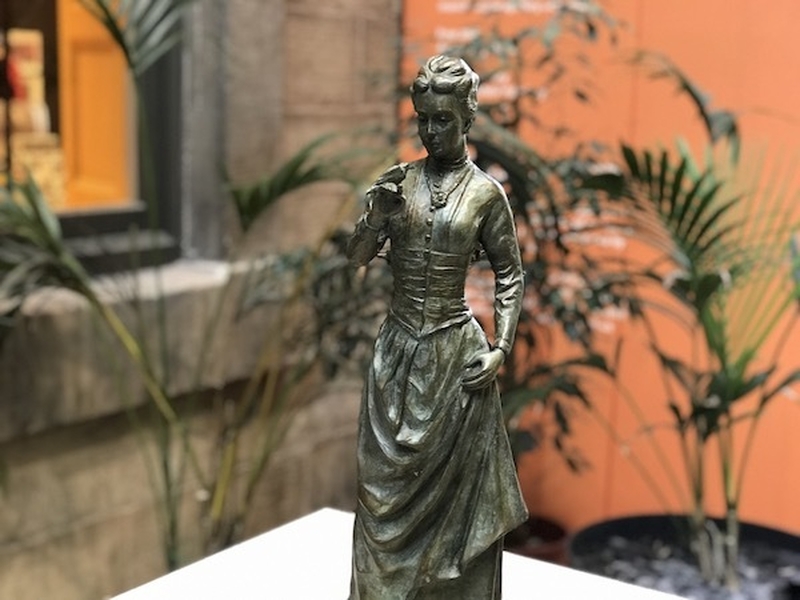
Back to the present day and the campaign for Emily's statue culminated in a two-day festival at Manchester Art Gallery. Four maquettes by four sculptors were put on display, and the public voted for the statue they would prefer to see in the leafy environs of Fletcher Moss. The winning design was by Eve Shepherd, whose most recent work celebrated the achievements of another great woman; educational and equality campaigner Betty Campbell, whose statue was unveiled in Wales in September 2021.
Recently, the public discourse has been more focused on the removal of statues than the erecting of them, for example, the campaign to remove the statue of Robert Peel in Piccadilly Gardens. Our writer Jonathan Schofield argued against representational statues, preferring the more abstract turn in public art (though he does give the nod to the statue of Frank Sidebottom in Timperley). The campaigners argue that a statue of Emily, like the ones of Emmeline Pankhurst and Lily Parr, will add to the otherwise woefully low number of statues representing women in Manchester.
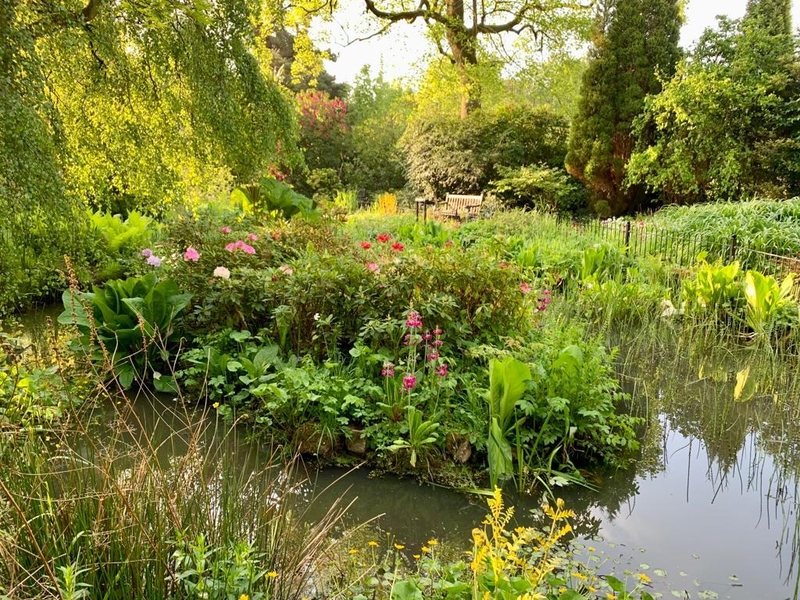
Celebrating a visionary
The chosen sculptor Eve Shepherd said: "I’m deeply honoured to be chosen to create the Emily Williamson statue for Fletcher Moss Park, Manchester and the bird loving community. I feel very humbled and privileged to sculpt such an important pioneer and eco-activist. She was an incredible visionary, a quiet, yet stoic woman, who stood against the norms of her day. She co-created a legacy, the RSPB, a charity that has saved countless bird lives and protected precious natural habitats for future generations to enjoy. In my eyes Emily is a shining beacon of how we can save our fragile ecosystem in these unprecedented times.
“Emily Williamson was one of those amazing women who has been forgotten because of her gender. This statue will be a triumph, a milestone, for how far we have come to balance the scales of equality for women within public sculpture, though we still have some distance to go. I am so very delighted and excited to have been selected to be part of this!”
The maquettes are on display in Manchester Art Gallery until 14 November. The Emily Williamson Festival will take place from 13-14 November. The winning maquette will be announced on 14 November.
What the sculptors say
Eve Shepherd: "Emily Williamson’s statue has to have longevity – which is why I’ve put in so much detail, because it needs to tell so many stories."
"From a distance, it’s a Victorian woman in a stiff crinoline. Get closer, and you’ll see that her skirts are actually a cliff-face studded with vignettes. Owl, heron, grebe, kingfisher… birds once used in millinery, birds that are vulnerable today; also feather workers, eco campaigners… I’d like to use ‘augmented reality’ technology to bring to life all the stories behind the story. This has never yet been done with public sculpture."
Laury Dizengremel: "Sculpture is my passion. I can’t think of anything that rocks my boat more in any shape or form. I love working site specifically, I love responding to a commission. I really love the historical subjects. A whole new world opens up, a gradual process of arriving at the person.
"With Emily Williamson, there’s so much more to it than that little photograph. I want people to have an emotional response to my sculpture of Emily. I want it to have an emotional impact. I want people to be able to walk up to it, like a person, and say, 'Hi there'."
Billie Bond: "To me, the feathers, the hats and the birds were the most important part of the story. The statue needs to shock, to show what was happening. But I wanted the hat to also tell a different story. By turning it upside down, Emily is giving it back to the birds. The little bird perched on the rim is a robin. It’s a symbolic offering: the robin represents rebirth."
Clare Abbatt: "I was inspired by Emily’s relationship with Sir Patrick Bateson and his daughter Melissa, and the thought of this connection with birds going through the generations. In my sculpture, Emily and her great, great niece Melissa are both looking to the skies, where the bird will be released. They’re also looking to the future...I’m very motivated by the idea of the ‘good ancestor’: someone taking action that will resonate for decades, centuries, millennia to come. What we do today ripples down through the generations."















